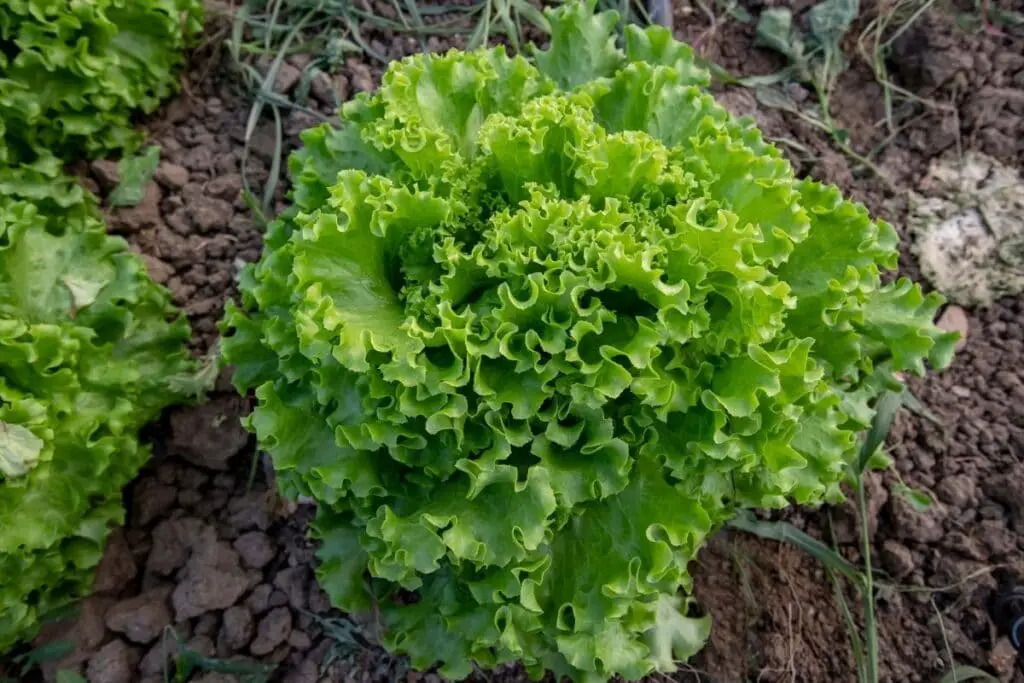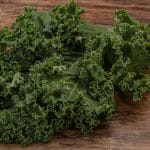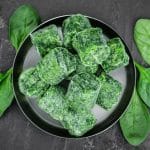In a nutshell: Spinach, arugula, mustard greens, frisee, radicchio, kale, chard, etc., are all good substitutes for escarole. The choice of a substitute depends on whether you want to maintain bitterness, add boldness, soften the flavor, and whether the dish is served raw or cooked. Each alternative brings its unique characteristics to dishes, providing a range of options for healthy and flavorful meals.
No need to skip your greens just because you can’t find, or don’t like the taste of escarole. It’s a versatile green that is used in a wide range of cuisines. This means that the escarole substitute you choose will most likely depend on the dish you are making.
In this guide, we’ll help you choose the best escarole substitutes according to the texture and flavor your recipe requires.
What Is Escarole?
Although chicory, escarole, and witloof don’t look similar, these leafy greens are all part of the endive family. Escarole is sometimes also referred to as Batavian endive. Its outer top leaves are curly, medium to dark green with a mildly bitter flavor, while the parts closer to the stem are lighter in color.
Unlike delicate lettuce and green herbs that wilt and turn mushy when exposed to heat, escarole can stand up to the heat with a sturdier texture. Sauteing not only makes it a little more tender but also tempers the bitterness.
As with most leafy greens, escarole’s high fiber, antioxidant and vitamin-rich characteristics make it a healthy meal enhancer.
To keep it fresher for longer, always refrigerate the greens unwashed. Wash them just before using or cooking to remove the dirt and dust. If damp greens that have been washed go into the refrigerator to be stored, they will lose their crunch quickly and will also turn bad faster.
Best Escarole Substitutes
1. Spinach
If Popeye taught us one thing, it’s that these healthy greens are a beneficial addition to any diet. With similar bitter notes and versatility, it’s a good substitute in almost any application.
Spinach can be baked, sauteed, used in soups, side dishes, and in a main meal. As with escarole, it becomes slightly less bitter when cooked and pairs well with almost any savory flavor profile.
If you are looking for a less bitter green to use raw in a salad, baby spinach is a better choice. Besides having less bitterness, the leaves are also smaller and more tender.
2. Arugula
Arugula, or rocket salad leaves, have a mild peppery flavor and slightly bitter taste. The dark green leaves are tender which makes this a good substitute for escarole in green salads as well as pasta dishes and tomato dishes. It can also be used as a topping for pizza, mixed into a blend of herbs, or added into a sandwich.
3. Mustard Greens
Since mustard greens have a distinctive bitter flavor, they pair best with bold dishes. When used with other subtle flavors they may end up overpowering the dish. Related to curly kale and broccoli, leaf mustard can handle the heat which means they’re ideal to be used as a replacement in cooked dishes.
Mustard greens are best steamed, boiled, or served as sautéed vegetables to counteract the bitterness. If you need something with only a slightly bitter flavor, smaller, young mustard greens are a better option for salads.
4. Frisee
Narrow, curly, and almost frizzy frisee leaves are much lighter in color and sometimes appear light green to yellow towards the top. This leafy salad green is part of the same endive family as escarole and also goes by the name curly endive or chicory.
Frisee is best used raw as a garnish or added to salads and can be paired with delicate dishes without being overpowering.
5. Radicchio
Radicchio, or red chicory, brings an extra pop of color with its unique burgundy and white ribbed leaves. As a raw addition it offers crunch and bitterness, while cooking it will soften both the texture and tone down the bitter taste.
Since it can be used cooked or raw it is wonderfully versatile and can be used in almost any application as an alternative. It also stands up well to dressings so you don’t need to worry about it becoming soggy or wilted when dressed in a salad.
Since it has a firm texture, similar to cabbage, shredding it when using it raw is best as it can be hard to eat in large chunks. Although radicchio and red cabbage look very similar, they are two different vegetables.
6. Kale
Kale is a fibrous and dense green. It is praised for its high nutritional value. Since it has a tough texture, it is best added in cooked applications. The dark green leaves are best used as a replacement in soups, stews, sauteed, or even in stir fry.
7. Chard
Chard is also referred to as silverbeet or Swiss chard, and is similar to spinach. When raw, it is somewhat bitter but cooking transforms the greens to taste more earthy with a touch of sweetness.
Some chard stalks are gorgeously colorful with splashes of yellow, red, and purple. Chard is great in soups, stews, and pasta. If you are after the bitter notes, you can add small amounts, raw, to salads.
8. Beet Greens
These flavorful greens are fairly similar to chard in texture and flavor. If you are buying, or growing, beets, don’t throw away the leafy greens. Trim them an inch from the beet bulb.
The leaves and the stems are edible, so give them a good wash and saute them or add them to soups, stews, or pasta sauce. Turnip greens can be used in a similar way.
9. Bok Choy
Bok choy or pak choi, is not an exact flavor match for escarole, however, if it is all you have, go right ahead and add it to your dish. The flavor is mild and not too bitter. If you are trying to get away from the bitterness of escarole, this is a good choice, but keep in mind that your dish will taste a little different.
The leafy vegetable is fully edible from leaves to bulbs and is popular in Chinese cuisine. It is great prepared as a vegetable side on its own, added to salads, stir fry, and soup.
10. Romaine Lettuce
Romaine lettuce has big and long lettuce leaves which are crunchy and juicy. The bottom white stems are crunchier while the top part of the leaves is a darker green color and more tender, very similar to that of escarole.
These greens can handle a little heat, either grilled or boiled for about 20 seconds just to wilt them. Although, they are mostly used raw in salads. The dark, tender, leafy parts are more bitter than the crunchy stems, but the bitterness is not overwhelming which is why they are ideal to replace escarole as a raw substitute.
How to Choose the Best Escarole Substitute
When choosing your substitute, consider the properties of escarole that are most essential to your dish, and then choose the option that features those characteristics most accurately.
If you need crisp and bitter greens that can stand up to heat and hold a good texture, don’t grab something like iceberg lettuce since this will just turn to mush when heated. Instead, kale, spinach, and mustard greens are ideal in cooked applications.
If bitterness or a bold flavor is needed in your dish, mustard greens and arugula can add the pop you are looking for. On the other hand, if you want to tame the bitterness and don’t like the taste of escarole you can opt for bok choy, frisee, or romaine lettuce. Frisee and romaine lettuce are also ideal in salads since they’re a little more delicate.
FAQs
If you need a substitute for your greens in Italian Wedding Soup, chard, collard greens, spinach (and baby greens), or mustard greens are all suitable options.
Batavian endive and escarole refer to the same leafy green, however, Belgian endive is a different vegetable with a lighter color and cigar shape. The leaves are tightly packed, in a similar way to cabbage. As opposed to the frilly, dark green leaves of escarole, Belgian endive leaves are light yellow-green and become white closer to the base. Belgian endive may also be sold as French endive or witloof. Their small 6-inch size and mild flavor make them great for salads, although they can be braised, sauteed, added to soups, or used in a sandwich.
The leafy green is versatile with the inner crunchy leaves being best to use in raw salads and the dark outer leaves ideal for cooking. Cooking and the addition of acid will tame the bitter flavor.
No, escarole and kale are not the same. They are different types of leafy greens with distinct flavors and textures. Escarole has a milder, slightly bitter taste, while kale has a stronger, earthier flavor.
Conclusion
Leafy greens are essential in a healthy diet. Whether you eat them as a main component of a salad or side dish or hide them in a pasta sauce or stew, they’ll bring loads of good nutrition to your meal.
Although our list of substitutes for escarole are all green leaves, their shapes, sizes, textures, and flavors differ tremendously. When choosing the best escarole substitutes think about the flavors and textures, but most importantly use the greens that you love to eat.
*image by mylasa/depositphotos









